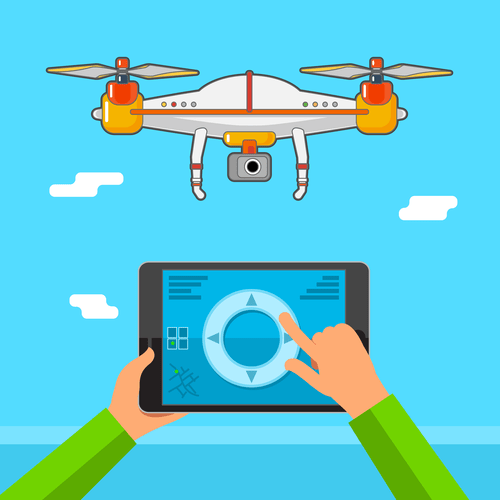Most probably yes, since it is very difficult to determine what the sender really means, unless they clearly communicate the intention of a message, which is not always possible. When it comes to communication between different languages, everything is even more complicated, as there is no universal way of conveying sarcasm, irony or double entendres, rather it varies from language to language or dialect to dialect. Gainsight is a partner of CompleteCSM, where co-author Bryan is the founder and CEO. For another, there’s often a disconnect between what people say they feel and what they actually feel. All-in-one Computer Vision Platform for businesses to build, deploy and scale real-world applications. While the approach is comparably complex and computationally resource-intensive, it achieves slightly higher accuracy on the FI dataset compared to the WSCNet (72% accuracy).
- You need to personalize that because different individuals might have different magnitudes and manifestations.
- This means users can specify target metrics such as “accuracy” while also providing other instructions.
- If the shop used emotion recognition to prioritize which customers to support, the shop assistant might mistake their smile — a sign of politeness back home — as an indication that they didn’t require help.
- These applications act as sentiment analyzers to automatically detect emotions and opinions and generate text ratings based on various parameters.
- Sentiment analysis can help artificial intelligence seem smarter by first analyzing the text sent by the user, then adjusting the chatbot’s automated response to reply with a certain tone or language that matches the user’s emotions.
- High diastolic blood pressure was also indicative of MDD and having public health insurance indicated, for the most part, non-MDD status (4c).
Online social network is currently a major source of information that can be instrumental in forming and influencing opinions and perspectives. The textual data present on OSNs can be misinterpreted causing unintended confusing and misleading opinions. Associating moods/emotions with textual data can prevent misinterpretation to a substantial degree.
Performance Analysis And Optimization
When it comes to customer experience, companies can use AI-produced insights to glean not only where there are problems, but also what’s causing them. For example, our model highlighted that one firm’s employees were often inflexible and showed little care when faced with customers’ complaints. Based on this insight, the firm trained employees in customer experience workshops to deliver key messages about customer care, customer empathy, service recovery strategies (what to do when things go wrong), and taking corrective actions. By following these customer experience actions, firms saw an increase in customer satisfaction, and an improvement in retention. Finally, our AI generates and converts key features into predictive variables that can train the model to predict whether customers are satisfied, neutral, or have a complaint, without using quantitative survey scores.

Sentiment analysis can help artificial intelligence seem smarter by first analyzing the text sent by the user, then adjusting the chatbot’s automated response to reply with a certain tone or language that matches the user’s emotions. Emotion AI, also known as affective AI or affective computing, is a subset of artificial intelligence that analyzes, reacts to and simulates human emotions. Relying on natural language processing, sentiment analysis, voice emotion AI and facial movement analysis, emotion AI interprets human emotional signals coming from sources such as text, audio and video. One intuitive route to address this issue is to use an unsupervised learning scheme that, instead of learning to predict clinical outcomes, aims at learning compacted yet informative representations of the raw data. A typical example is the autoencoder (as shown in Fig. 1d), which encodes the raw data into a low-dimensional space, from which the raw data can be reconstructed. Some studies reviewed have proposed to leverage autoencoder to improve our understanding of mental health outcomes.
What Is Emotion AI?
In general, the content of these comments offers a much more reliable predictor of a customer’s behavior. Yet, these are often ignored, and if used at all, are typically used https://www.globalcloudteam.com/ after the scores are computed. The problem is these surveys can’t pick up important emotional responses and end up missing critically important feedback as a result.
The results provided an implication that the social structure of the stressed users’ friends tended to be less connected than that of the users without stress. By letting AI tap into your customer conversations, either voice, video, or text, AI can take complex and often puzzling data and find patterns in effective communication not apparent to the naked eye. The potential applications of these technologies go beyond sales and customer success. Many professional roles requiring strong communication skills, including leadership, public speaking, product management, virtual therapy, teaching, language learning, and bedside manner will benefit from AI that measures emotional intelligence. Indeed, by 2026, the combined market size for emotion detection and conversational AI are projected to grow to more than $55 billion.
Appendix: Predicted moods
In video gaming to measure fear and excitement in an individual, emotion detection systems can be used. In market research emotions are detected to know what customers are feeling which is very important in businesses. Emotion detection systems can be used to detect emotion of the customer through customer reviews for various products. Utilising emotion analytics in recruitment process companies can easily find prospective candidates for jobs. AI algorithms measure the facial expressions, personality traits and emotions in a video interview based on candidate’s responses which leads to an unbiased interview process and makes job of the interviewer easy.
In recent years, artificial intelligence (AI) has emerged as a valuable tool in streamlining and enhancing various business operations, including financial planning. Here are five compelling ways to embrace AI in your end-of-year financial planning. When major news sites like CNN are publishing a steady stream of stories about the potential (positive or negative) of AI and tools like ChatGPT, you know it’s having its moment in the spotlight, which is likely to last longer than 15 minutes. Studies using magnetic resonance imaging (MRI) have been able to achieve slightly higher predictive performances ranging from 67 to 94%32.
Advertise with MIT Technology Review
Second, we have human annotators listen to calls and mark up, for example, if a person is speaking too quickly for a particular part of the call. We make sure we pick those individuals from a variety of backgrounds — different genders, ages, cultures, so that we aren’t just getting one perspective of what “good” is for a call. The market size for emotion recognition is expected to jump 12.9 percent by 2027. The challenges raised by facial recognition technologies – including ERT – do not have easy or clear answers. Solving the problems presented by ERT requires moving from AI ethics centred on abstract principles to AI ethics centred on practice and effects on people’s lives.

Sonde acquired its voice data through research studies, partnerships, and crowd-sourcing. They acquired NeuroLex Labs, a company that provides online, https://www.globalcloudteam.com/how-to-make-your-business-succeed-with-ai-customer-service/ voice-based surveys. With this multi-pronged approach, Sonde’s repository has over 1 million voice samples from over 80,000 people globally.
How To Track Your Mood
Whether it is the subjective nature of emotions, or discrepancies in emotions, it is clear that detecting emotions is no easy task. Some technologies are better than others at tracking certain emotions, so combining these technologies could help to mitigate bias. In fact, a Nielsen study testing the accuracy of neuroscience technologies such as facial coding, biometrics, and electroencephalography (EEG) found that when used alone, accuracy levels were at 9%, 27%, and 62% respectively. Such combinations therefore serve as a check on the accuracy of results — a referencing system of sorts. Recent research developed an approach to recognize the emotional state of people to perform pairwise emotional relationship recognition.

Compared with treatment for physical conditions, the quality of care for mental health is poor. Recovery rates have stagnated and in some cases worsened since treatments were developed. These applications act as sentiment analyzers to automatically detect emotions and opinions and generate text ratings based on various parameters.
Advancing Naturalistic Affective Science with Deep Learning
Also, this review highlights multiple existing challenges in making DL algorithms clinically actionable for routine care, as well as promising future directions in this field. In total, 57 studies, in terms of clinical data analysis, genetic data analysis, vocal and visual expression data analysis, and social media data analysis, which met our eligibility criteria, were included in this review. Decentralized, Edge-based sentiment analysis and emotion recognition allow solutions with private data processing (no data-offloading of visuals). However, privacy concerns still arise when emotion analysis is used for user profiling. You might think the first step in sentiment analysis would be teaching the computer to understand what humans are saying. But that’s one thing that computer scientists cannot do; understanding language is one of the most notoriously difficult problems in artificial intelligence.









